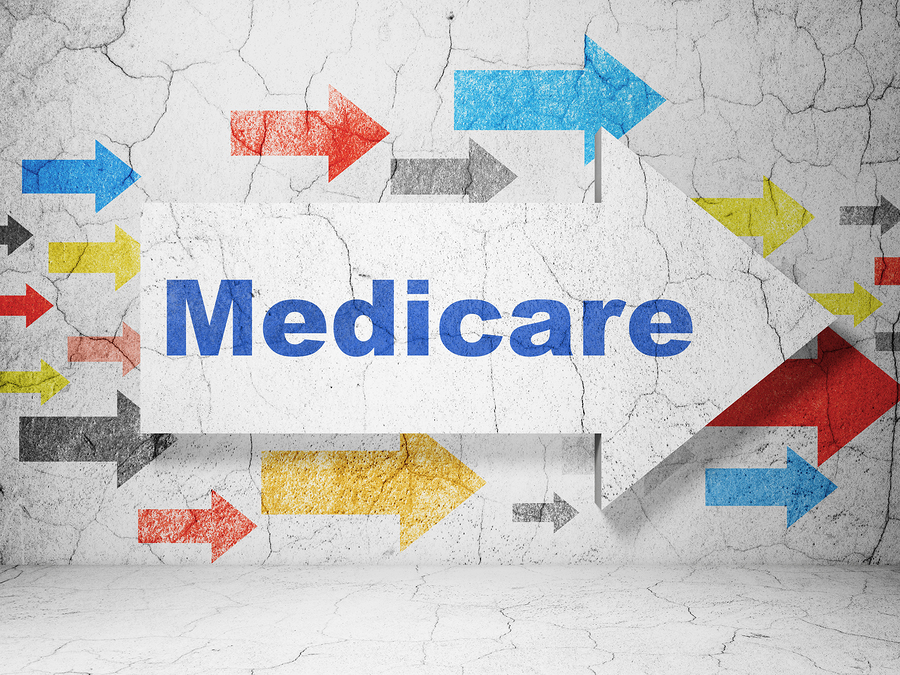A Complete Guide to Medicare in 2020

Everyone knows change is constant with Medicare. It comes as no surprise that the year 2020 is bringing new policy changes that impact all current and future Medicare beneficiaries.
It’s important to keep members in the loop when Medicare makes changes. The new year and new changes may inspire beneficiaries to adjust coverage before January.
Certain plans are going away for new enrollees and new policies are being released.
A Complete Guide to Medicare in 2020
The Medicare Access and CHIP Reauthorization Act (MACRA) is changing how the U.S evaluates doctors and pays for care. Some changes impact beneficiaries, especially those newly eligible for Medicare.
In 2020, some plans are going away, the coverage gap is closing, and new coverage options are becoming available. This is a big year for seniors with Medicare.
This guide walks you through the unfamiliar and explains the new updates.
Why Medicare Discontinued First-Dollar Coverage Plans
In 2015, MACRA was put into place. It requires the elimination of Medigap plans that cover the Medicare Part B deductible.
The reason behind this is Congress believes Medicare members should cover the first dollar of care or pay a deductible. A first-dollar coverage plan is a policy that starts paying immediately, meaning there is no deductible before coverage begins.
They think that the over-use of healthcare services is because patients have zero-dollar out-of-pocket cost. By forcing ALL beneficiaries to meet the Part B deductible cost, they hope to lower Medicare claim expenses.
How Medicare Changes in 2020 Impacts Beneficiaries
The going away of plans impacts those Medicare eligible AFTER January 1, 2020.
Medicare beneficiaries eligible before the new year may continue enrollment in first-dollar plans. Those currently with first-dollar coverage are grandfathered into coverage.
This allows currently eligible Medicare beneficiaries to keep their plans. These beneficiaries don’t need to make any adjustments to coverage unless comparing rates/benefits to see if there’s a more comprehensive plan.
Any person eligible before 2020 can sign up for first-dollar coverage plans after 2020. However, beneficiaries eligible in 2020 can’t enroll in Plan C, F, or High-Deductible Plan F.
Say Hello to Medicare High-Deductible Plan G
High Deductible Plan G (HDG) is coming to town January 1, 2020. HDG gives newly eligible beneficiaries a high deductible option.
Even though the Part B deductible won’t have coverage on the HDG policy, the $185 applies toward the policy deductible. This policy is like the High Deductible Plan F.
New and current Medicare enrollees may opt-in for HDG coverage.
The benefit summary for this policy isn’t yet available. However, we anticipate the deductible requirements to be met before coverage begins.
Newly Eligible vs. Not Newly Eligible
Beneficiaries that become eligible for Medicare in 2020 can enroll in HDG; however, they can’t purchase Plan F, C or High-deductible F. These beneficiaries could find Plan N or G to be more comprehensive than some of the other plan options.
Those with Medicare prior to 2020 may have the opportunity to enroll in HDG. Beneficiaries that already have first dollar coverage may benefit from switching to Plan G, N or HDG.
Comparing plans with the help of an agent can save beneficiaries time and money.
Telehealth Benefit Coverage in 2020
Certain Medicare Advantage policies are going to implement telehealth care into coverage. Traditional Medicare may not cover telehealth benefits; however, MA plans are expanding to provide more beneficiaries coverage across the nation.
Telehealth care gives beneficiaries the ability to consult a doctor or other healthcare professional from the comfort of home. This is especially beneficial for those in rural areas or those that have trouble leaving home.
Donut Hole Closing in 2020
Another big change Medicare sees in 2020 is the closing of the donut hole. For beneficiaries with expensive prescription medications, this is great for your wallet!
The Donut Hole is a term for the Medicare Part D prescription drug coverage gap. The ACA has been working towards lowering the amount patients are responsible for when paying for their medications.
Originally, the donut hole phase was to lower Medicare’s expenses. In fact, it did more harm than good. Many beneficiaries had medications with no affordable generic options.
The Bipartisan Budget Act of 2018 became active last year. Under this act, drug companies must provide discounts to beneficiaries that match what they provide to insurance companies.
Although the donut hole is going away for the most part, it still exists. The change is that the out-of-pocket expenses become significantly less.
The new rule is that beneficiaries will pay 25% of the brand name cost and 37% of the generic brand cost.
Medicare beneficiaries receive an Explanation of Benefits (EOB) annually. The EOB reviews plan costs for coverage and medications. Beneficiaries with questions or plan concerns should contact a Medicare agent for guidance.
Author Profile:
Jagger Esch is the President & CEO of Elite Insurance Partners, a senior healthcare learning resource center. As a young entrepreneur and seasoned insurance expert, he has a passion for helping people. Since the inception of his first company in 2012, he has been dedicated to helping those eligible for Medicare by providing them with resources to educate them on all their Medicare options. Jagger lives in the Florida sunshine state and loves boating with his family on the weekends.
Subscribe
Date: July 2, 2019


